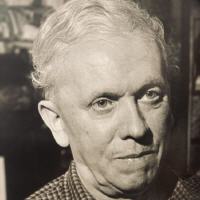
Raoul Dufy was a French artist and designer whose paintings and prints portrayed leisure activities and urban landscapes. He created airy washes of light and shade, into which he would draw bold calligraphic brushstrokes. The artist's experimental use of color was influenced both by
Claude Monet and his Fauvist peer Henri Matisse. “Blue is the only color which maintains its own character in all its tones it will always stay blue,” the artist mused. “Whereas yellow is blackened in its shades, and fades away when lightened; red when darkened becomes brown, and diluted with white is no longer red, but another color—pink.” Born June 3, 1877 in Le Havre, France, he enrolled in night classes at the École des Beaux-Arts before studying under Léon Bonnat at the École Nationale Supérieure des Beaux-Arts on a scholarship. Dufy first encountered Fauvism at the Salon des Indépendants in 1905, after which he adapted the style to serve his own artistic purposes. During his life, the artist traveled both abroad and within France, painting views of the Mediterranean city of Nice, as well as scenes of horse races and regattas. Throughout the 1920s, Dufy worked in a variety of materials, producing ceramics, tapestry hangings, and large-scale architectural decorations. His commission for the 26th Venice Biennale won him the International Grand Prix for painting in 1952, a year before his death on March 23, 1953 in Forcalquier, France. Today, the artist’s works are held in the collections of the Musée d’Orsay in Paris, the Hermitage Museum in St. Petersburg, The Museum of Modern Art in New York, and the Art Institute of Chicago.